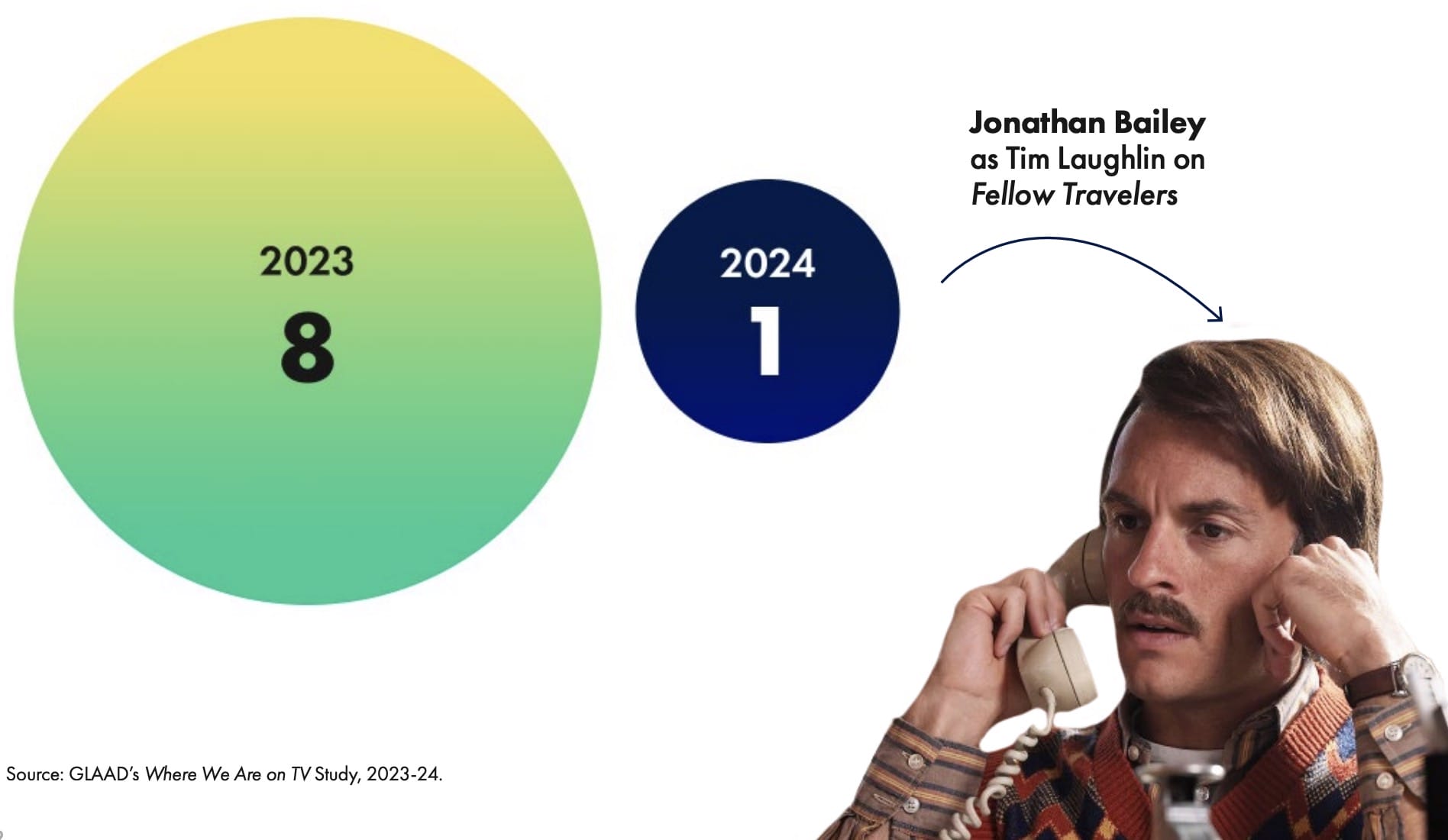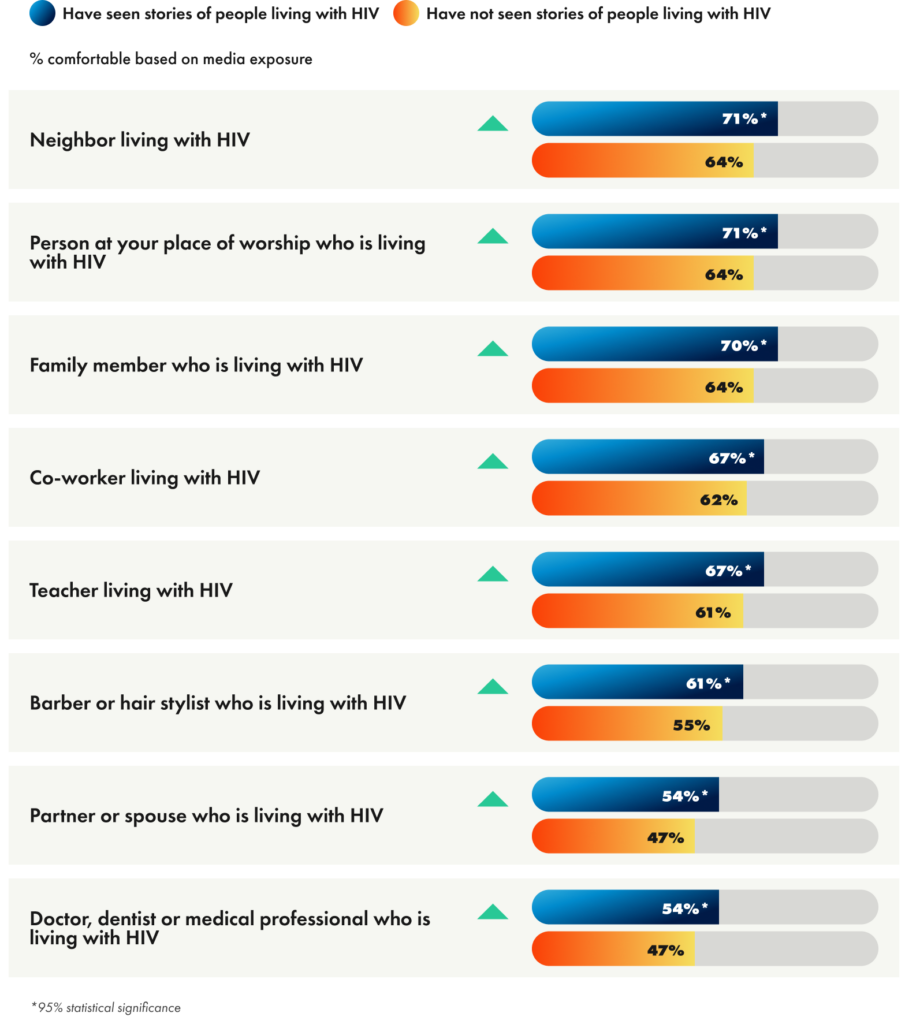The Loss of Stories About HIV: A New Silence
We know that seeing stories in media that accurately and fairly represent the LGBTQ community is key to breaking barriers and improving comfortability with LGBTQ people. For people living with HIV, consistent representation in entertainment media is crucial to eradicating HIV stigma and bridging generational knowledge gaps. And with only one LGBTQ character depicted as living with HIV in the last TV season according to GLAAD’s Where We Are on TV study — who is not expected to return — Hollywood is falling short when it comes to reflecting real stories of people living with HIV.
Correcting the record and holding media accountable to ensure stories of people impacted by HIV are told in mainstream media is the basis of GLAAD’s founding in 1985 amid the throws of the HIV/AIDS epidemic, when defamation and misinformation ran rampant about the epidemic. Today, with this study, GLAAD continues to deliver on its core mission and vision by calling into focus that comfortability with people living with HIV cannot be accomplished without key visibility in media to drive acceptance.
There’s perhaps no image more resonant from the earliest days of the HIV/AIDS crisis than the political poster Silence = Death, which features that enduring phrase alongside the image of a fuchsia triangle. The poster came out of the Silence = Death collective and predated the formation of the activist group ACT UP1. Its purpose was to provoke conversation and inquiry around HIV/AIDS where none existed previously. “The tagline was crafted to be provocative and alarming and to stimulate a political response in a setting that was not necessarily political,” Avram Finkelstein, founder of the collective and one of six co-creators of the poster, wrote in 2017. “It was the voice of the insider and, by surface appearances, was declarative. But it was meant to stimulate curiosity, and questions. In that regard it was a Trojan horse.”
“Silence = Death” is as relevant today as it was in 1987. While this year’s State of HIV Stigma Report reflected a slight uptick in Americans who say they’ve heard of HIV but don’t know much about it — 1 in 10 — GLAAD found that only half of Americans say they feel knowledgeable about HIV, 40 years since the first cases of what later became known as AIDS were officially reported. And, as compared to 2020, more people self-report being uncomfortable interacting with a co-worker or neighbor who was living with HIV.
Knowledge about HIV in the U.S. is Mostly Stable
Nearly 90% of Americans know at least a little about HIV, stable over five years. However, we have seen a significant increase in the percent of Americans say they have heard the term HIV don’t know much about it.

Just as more Americans report feeling less comfortablearound people living with HIV (PLWHIV) in those two scenarios, media representations of PLWHIV have fallen: in the 2023-24 television season, GLAAD counted only one LGBTQ character living with HIV on broadcast, cable, or streaming scripted primetime programming, down from 8 in the year prior.
When the original “Silence = Death” poster debuted, it was wheat-pasted into a world where president Ronald Reagan barely said the name of the virus and prominent conservatives, such as William F. Buckley, argued that people living with HIV should be tattooed to show their status. The poster was meant to inspire action to combat overwhelming stigma.
While the circumstances of today may be different, the lesson may be the same. We know that lack of information about HIV leads to a decrease in comfortability around people living with HIV. Data also proves the opposite to be true: among non-LGBTQ Americans surveyed by GLAAD, people who had been introduced to media about the virus notably increased comfortability around people with HIV.
While the “Silence = Death” imagery spoke to a political silence, this might be an opportunity to ask ourselves about the consequences of a cultural silence. What does it mean that there are fewer stories about people living with HIV available to the general public? Mass media is a powerful tool; a recent study showed that portrayals of people living with HIV can help reduce stigma, while also confirming that negative portrayals of people living with HIV can also have a reversed effect on attitudes towards them, as well2.
Knowing the power of entertainment media, the loss of stories about HIV can indicate a dangerous backslide at a time when information about the virus is needed most. How do we bring back curiosity? Curiosity does not come about in a vacuum, it must be piqued. We must find innovative ways to increase curiosity / learning about people living with HIV again.
Decreases in Comfortability Are Seen in a Couple Scenarios
However, there is more comfort this year compared to five years ago interacting with a doctor, dentist or medical professional living with HIV.

GLAAD’s Where We Are on TV Study Finds Only One LGBTQ Character Living with HIV this Year, and Not Expected to Return

Seeing Stories of People Living with HIV in Media Drives Comfortability
Media exposure is critical to comfortability with people living with HIV. When Americans see people living with HIV in the media, comfortability grows by up to +15%.













